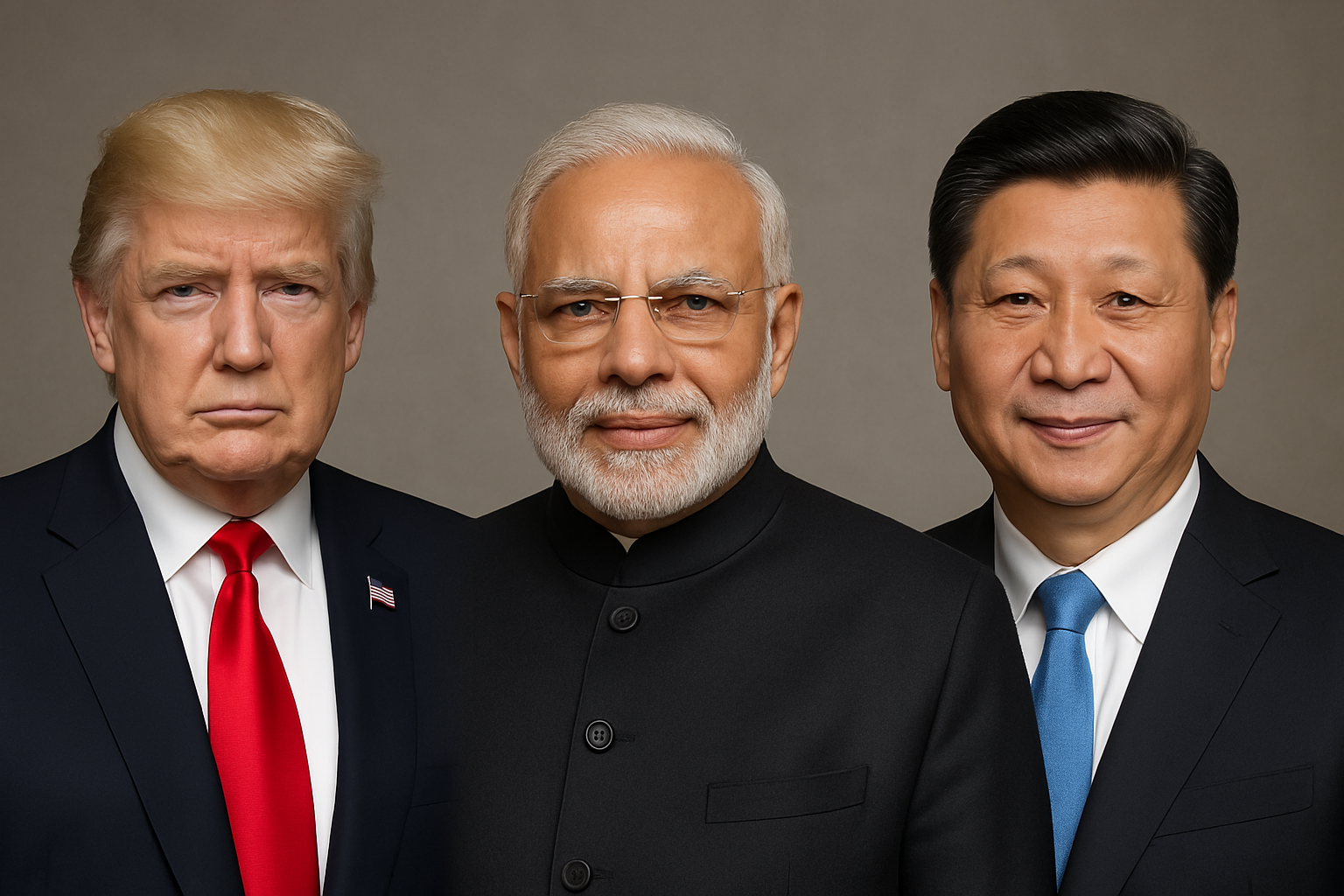
The ongoing trade conflict between the United States and China has created a significant shake-up in global markets, with both nations aggressively raising tariffs on each other's products. The United States has imposed a steep 145% import duty on Chinese goods, while China has retaliated with a 125% duty on American products. This sharp increase in tariffs has severely impacted the affordability of goods in both markets, opening up new doors for third-party nations — especially India.
As trade tensions escalate, American buyers are finding Chinese products increasingly expensive, while Chinese buyers face a similar challenge with American goods. In this shifting landscape, India has emerged as a strong contender to replace both U.S. and Chinese products in global supply chains, provided Indian businesses and policymakers act decisively.
If Indian manufacturers can meet global quality standards and offer competitive prices, they stand to capture market share in sectors where Chinese goods once dominated in the U.S. market. Among these sectors, toys, textiles, auto parts, household appliances, cutlery, furniture, and telecom equipment are seeing significant gaps created by the ongoing tariff battle. Chinese toys and garments, which were once priced low enough to dominate shelves in the U.S., are now becoming unaffordable, giving Indian exporters the chance to position their products as a reliable and cost-effective alternative.
Several sectors show promise for Indian exporters amid the US-China tariff war:
Toys: With Chinese-made toys now significantly more expensive in the U.S., India has a real chance to develop itself as a global toy export hub.
Textiles: Chinese textiles, long known for their low prices, are losing ground in the U.S. due to added tariffs. Indian textile manufacturers can step up to offer quality fabrics and garments at attractive prices.
Auto Parts: The spike in prices for Chinese auto components creates a lucrative space for Indian auto part manufacturers to expand their footprint in the global supply chain.
Household Appliances and Cutlery: As Chinese home and kitchen products become pricier, Indian brands can take advantage of the situation and capture U.S. market share with competitive offerings.
Furniture and Telecom Equipment: Indian manufacturers can leverage the current scenario to boost exports of furniture and telecom-related equipment, areas traditionally dominated by China.
The trade war also creates opportunities for India on the other side of the equation — replacing American products in the Chinese market. Key sectors include:
Soybeans: China is one of the world’s largest soybean importers. With American soybeans becoming expensive, Indian exporters could expand their supply to meet China’s demand.
Pharmaceuticals: India’s established pharmaceutical industry is well-positioned to replace American products in the Chinese healthcare market.
Industrial Machinery: Indian manufacturers of machinery and equipment can target the Chinese market, where U.S. imports are now more costly.
Plastic Materials and Medical Equipment: As American plastic products and medical equipment become pricier for Chinese buyers, Indian companies can bridge the gap with cost-effective alternatives.
Automobiles: American-made cars, both new and used, are now at a disadvantage in China due to tariffs. Indian automotive companies, especially those with global aspirations, can leverage this window to expand their reach.
Although the opportunities are promising, it is essential for Indian businesses to stay updated on policy changes. Recent examples show that tariff rules can shift rapidly — for instance, U.S. President Donald Trump initially planned to impose tariffs on smartphones and computers but later announced exemptions for these items.
For Indian companies and investors, the current trade war could mark the beginning of a new chapter in international trade. Strategic planning, timely action, and government collaboration will be key to turning this challenge into an economic advantage.
Disclaimer:
The information provided in this article is for informational and educational purposes only. The content is based on publicly available data and general industry analysis. It does not constitute financial, investment, or trade advice. Readers are advised to conduct their own research or consult with a qualified professional before making any business or investment decisions. The author and publisher are not responsible for any losses or damages resulting from the use of this information.




